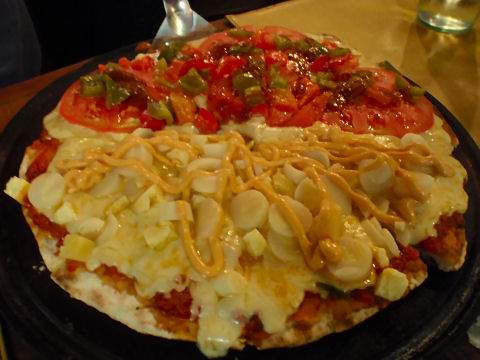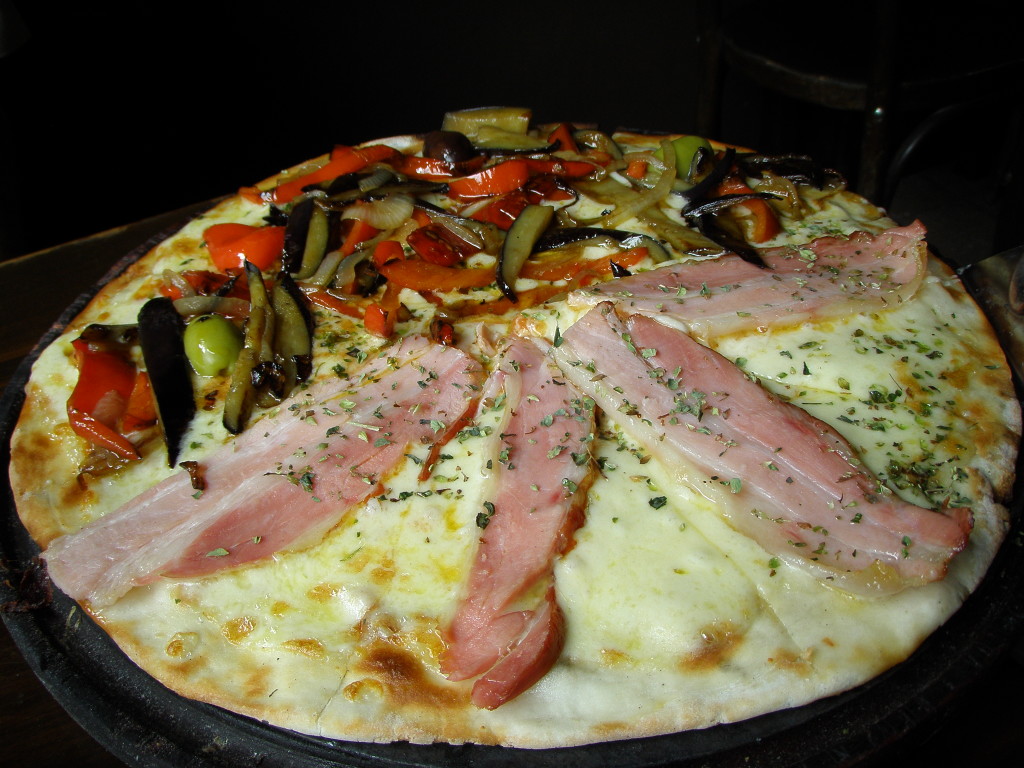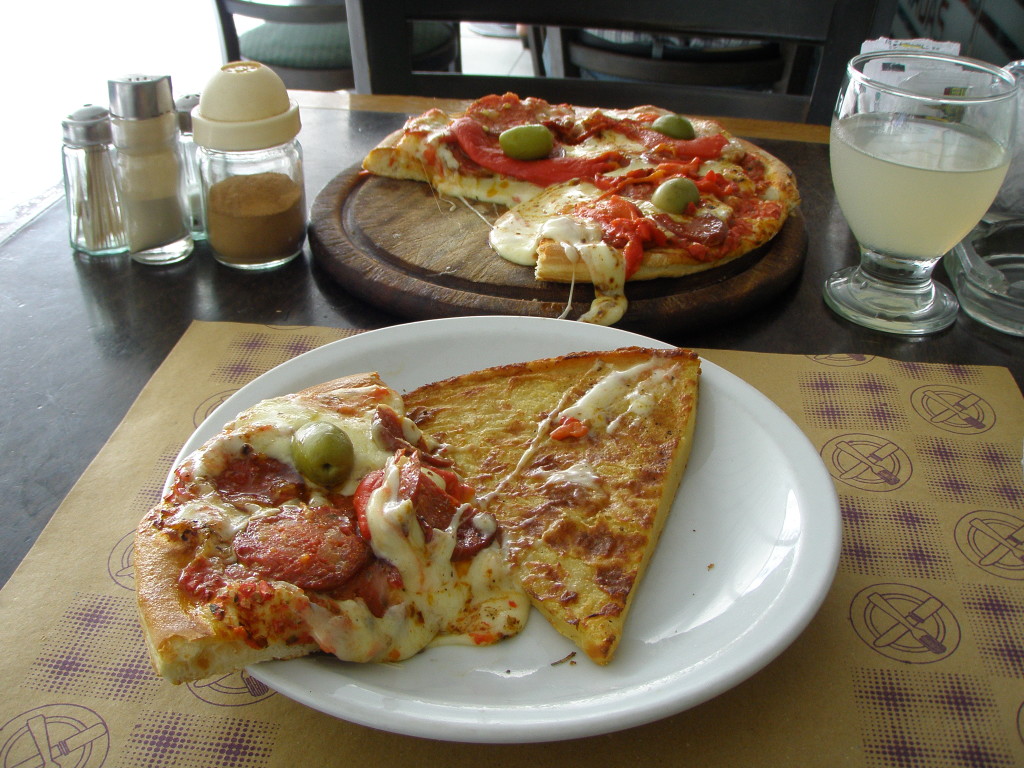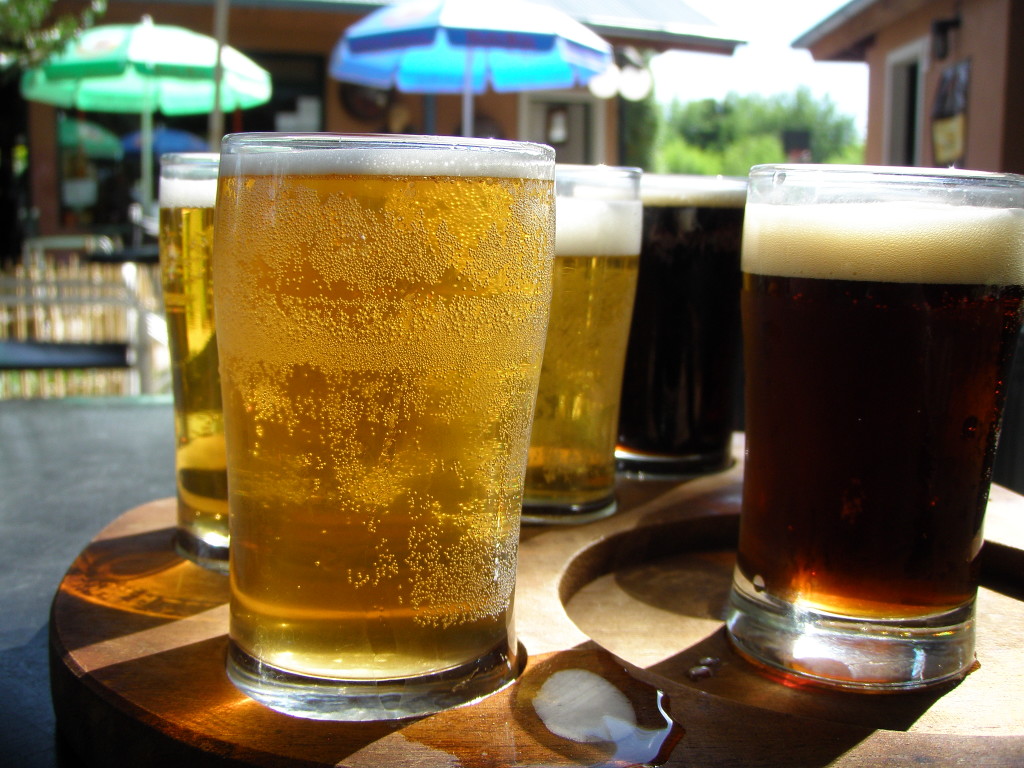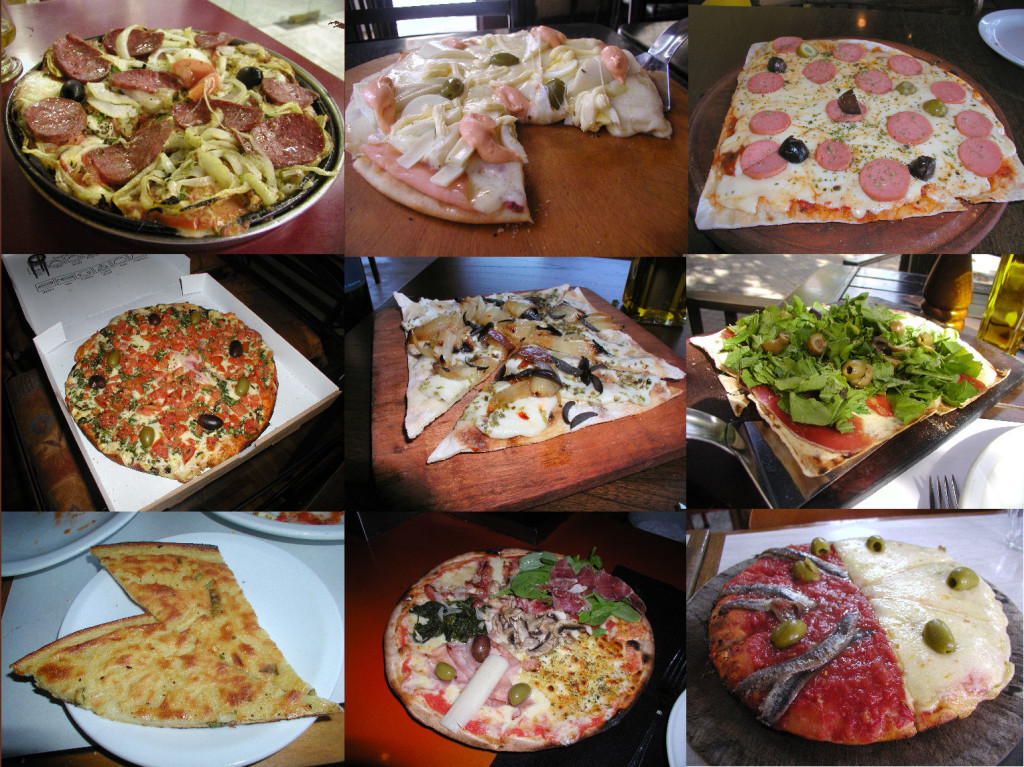Q San Francisco
January 1999
Pages 26-30
ROME: The Eternal City
Images Brett Kaufman
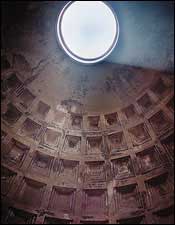
The Colosseum, the Pantheon, the Imperial Fora, the Circus Maximus, the Sistine Chapel, the Borghese Palace, the list goes on and on. These are the ancient places you’ve read about since you were a kid. Welcome to The Eternal City!
Over the course of western literary history, more has been written about Rome than about any other single city on the planet. For the inveterate traveler, wanderer, amateur archaeologist, poet or artist, it is, perhaps, the one “must visit” city. It is hard to imagine a more fascinating assemblage of the ancient and the modern in one place.
During my years of reading about Rome two things always stood out. First, I was led to manifest visions of a city overrun by feral cats. Somehow or other there seemed to be more denizens of the feline variety than the human. When I arrived, I did find cats, scattered here and there, and indeed they do run free, but they tend to remain in small, localized areas of some of the older ruins dotted throughout the city.
“I should like to see Rome,” she said; “it must be a lovely city, or so many foreigners would not be constantly arriving there. Now, do give me a description of Rome. How does the city look when you enter in at the gate?”
– Beauty of Form and Beauty of Mind, Hans Christian Anderson
Second, I was led to believe that Rome existed as a city of fountains–which turned out to be absolutely true. Fountains are everywhere. Most of them are small, not quite nondescript. But the major ones are truly awesome. The foremost spouting water attraction in the world is undoubtedly the Fontana di Trevi, a massive, amazing sculpture of water and marble. A photo in front of this fountain, preferably in the evening when it is beautifully lit, is a must for tourist and Italian alike.
My fountain of choice is Fontana delle Tartarughe. Located in Piazza Mattei, this 16th century fountain has been modified by several major sculptors over time. The graceful sculpture depicts four young boys in the buff assisting four tortoises on their climb into the top of the fountain. The Tartarughe is also located near one end of one of my favorite streets in Rome, Via Giulia, the main street of the old Jewish Ghetto, now home to great little art galleries and design shops.
One of the most popular places to hang out and people watch is Piazza Navona. Crowds of locals and tourists gather round to watch artists and performers do their thing around this multi-block open space.
For myself, Piazza del Popolo is where I go to sit, soak up some sun and watch the world pass by while surrounded by four massive lion fountains that guard the space. Popolo is also known, by those who apparently know such things, as one of the piazzas where gay men and women congregate. Popolo makes a great starting spot for a day of sightseeing, equipped with gothic churches, ancient ruins and a fascinating Italian art museum.
Sightseeing is the major reason to vacation in Rome. There is, of course, the necessary visit to the Vatican Museums, especially the Sistine Chapel. If you don’t want to wait in line forever, get there early, take a walk through the Chapel first, and then go back to the Museums later. (Major tip: Don’t wear shorts or sleeveless shirts when touring Rome, especially in religion related places–Romans are notoriously conservative about mode of dress and will bluntly refuse you admission to most churches, and definitely Vatican City. The same is true of many restaurants.)
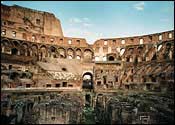 If, like me, you are into really ancient ruins, a stop by the Largo Argentina for a look at the four Republican temples is well worth it. This square block area is also home to an amazing number of cats that have overrun the sacred grounds and are now considered kind of sacred themselves. A morning at the Imperial Forum and the Colosseum is impressive, however, access to the latter, and whole sections of the former, is limited because of crumbling rock and restoration attempts.
If, like me, you are into really ancient ruins, a stop by the Largo Argentina for a look at the four Republican temples is well worth it. This square block area is also home to an amazing number of cats that have overrun the sacred grounds and are now considered kind of sacred themselves. A morning at the Imperial Forum and the Colosseum is impressive, however, access to the latter, and whole sections of the former, is limited because of crumbling rock and restoration attempts.
For the truly classical-oriented, a short train trip out to the 1st century city of Ostia Antica is an absolute must. I spent an entire day there exploring the ancient ruins. Some of the most fascinating mosaics, including a gym floor laid out in black and white tile pictures of naked athletes and an anatomical invitation floor mat at the local bathhouse, are a couple features sure to catch your eye.
Speaking of bathhouses, if you want to see what they were really all about, drop by and spend an hour or two at the Baths of Caracalla near the Circus Maximus. When operational, the Baths–equipped with gym, solarium, sauna, whirlpool and private lounges–handled 1600 people per day. You’ll never look at a modern “health club” the same way again!
If you want to be awed by a monument, go to the Pantheon. Incredibly well preserved and beautiful, it will take your breath away. Dating over two thousand years old, it is in better shape than many buildings built in the last century. While you’re in the neighborhood, you can drop by Piazza Minerva and see one of my favorite statues, a really cute little elephant.
The impressive Spanish Steps (with a great little fountain at the bottom, the scene of much cruising) is also, of course, a must visit. I prefer to start at the top, from where you get a full view of Rome, and walk down, though the fitness buffs among us will want to walk up. From the base of the steps you can hit the major shopping district where you will find every fashion designer in Rome along Via Condotti and Via Borgogna.
If you just want to relax and see some beauty, drop in and wander around the nearby Borghese Park where you can see everything from old villas to statuary, to a small lake, to the stunning Galleria Borghese (by appointment only).
DINING OUT
Food in Italy is, of course, a major concern. Let’s start simply. Coffee. More specifically, espresso. Two places serve exceptional espresso: Sant’Eustachio (82 Piazza Sant’Eustachio) and La Tazza d’Oro (84 Via degli Orfani), both near the Pantheon. Personally, I am a fan of the latter, but try both and decide for yourself. Also, in the late afternoon, La Tazza d’Oro serves a great espresso ice with whipped cream.
Ice cream, well, gelato, is an Italian passion. The most famous and most popular spot to get some frozen heaven is Giolitti at 40 Via Uffici del Vicario; with their array of flavors that makes Baskin Robbins look like amateurs, it’s tough to do much better. There is one exception, San Crispino. With two locations (56 Via Acaia, in the southern suburbs, and 42 Via della Panetteria, by Fontana di Trevi), they serve the most amazing ice cream you will ever have. The owners use only the absolutely best ingredients they can find: their house flavor uses honey from their own bees, their zabaglione flavor uses a twenty year old reserve marsala wine, their scotch flavor uses an eighteen year old single malt–an ethereal experience to say the least.
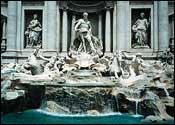 You’re in Italy, so pizza, right? Not quite what you’re used to at home, but you’ll find the real thing here. Hands down, the best pizza I’ve ever had is from a little hole-in-the-wall called Da Giovanni, at 39 Piazza Campo de’Fiori. Piazza Campo de’Fiori is also one of the coolest places to hang out. There are several coffee bars, several wine bars (including one of the best, La Vineria, at #15), and one of the best open-air food markets you’ll ever visit. The other must see food markets for those who, like me, like to visit them, are at Piazza Vittorio Emanuele and, if you’re in the area of the Vatican, Piazza dell’Unità.
You’re in Italy, so pizza, right? Not quite what you’re used to at home, but you’ll find the real thing here. Hands down, the best pizza I’ve ever had is from a little hole-in-the-wall called Da Giovanni, at 39 Piazza Campo de’Fiori. Piazza Campo de’Fiori is also one of the coolest places to hang out. There are several coffee bars, several wine bars (including one of the best, La Vineria, at #15), and one of the best open-air food markets you’ll ever visit. The other must see food markets for those who, like me, like to visit them, are at Piazza Vittorio Emanuele and, if you’re in the area of the Vatican, Piazza dell’Unità.
Now back to pizza; rather, Pizza Bianca–which is basically what we call focaccia. Simple, oiled, salted and sometimes herbed pizza dough baked light and delicious. Romans slice these open and fill them with a variety of meats, cheeses, and vegetables. The secret spot to acquire some has no name on the door, people just usually call it the “you know, the no-name focaccia place.” Owned by Salvadore Paladini, and located at 29 Via del Governo Vecchio, this is the one snack place you can’t miss in Rome. Have a Bianca filled with stracchino cheese and arugula while you sip some mineral water and stand around. Then take another one to have with you for when you get hungry later. Maybe stuffed with mortadella and cured Sicilian olives?
Few restaurants in Rome are really great, but almost all that I’ve eaten in are quite good. Here are the four that I would recommend you check out if you have little time and want to sample the best.
For lunch, Sora Margherita, at 30 Piazza delle Cinque Scole. This is a bargain priced osteria serving serious Roman-Jewish fare. Watch for owner Margherita Tomassini to serve you, with a twinkle in her eyes and a casual “signorine” (“ladies”) as she sets your food out.
For a simple dinner and great people watching, head over to the area around Piazza Navona. Hang for a bit and watch the world walk by, then walk down the little side street off the west side of the piazza to the corner of Via delle Pace, #25, and have a drink and dinner outside at Bramante. This savory little place is owned by friend Giuseppe Pecora. Tell him I said, “Buona Sera.”
For a great dinner and an incredible wine selection, you must visit Al Bric at 59 Via del Pellegrino–one of Rome’s newest wine bars that, unlike many wine bars, pays just as much attention to food. While not inexpensive, the selection of great Italian fare and wines is worth the tab. By the way, restaurants in Italy, generally, charge the same as retail stores for wine, so you won’t get hit with outrageous prices for your fave quaff.
Last, but by no means least, one of the best high-end restaurants in Rome is a place called Il Convivio, at 44 Via dell’Orso. Not particularly classic food and not even completely Italian, this restaurant offers more of the cutting edge of cuisine in Rome. If you want to see what a great chef in Rome is doing with modern multi-cultural cuisine, this is the spot you want to hit.
WHERE TO STAY
The fun thing about Roman accommodations is that you can live like a queen or live like a monk. There are plenty of good hotels in Rome ranging from really cheap to really expensive. Expect that hotel rooms will not be particularly large. In general, however, the hotels are clean and well-managed.
Hotel staff in Rome are notoriously helpful for making sure you enjoy your stay. Most hotels provide a Concierge who will get you restaurant reservations, gallery appointments, and provide you with directions and ideas for all sorts of things to do.
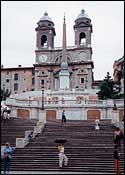 If you don’t mind a room in which it’s hard to turn around without bumping into something, I recommend the Rinascimento, conveniently located near Campo dei’Fiori, at 122 Via del Pellegrino. A small (18 room) converted palazzo with modern, clean rooms, this is one of the better bargains you will find in Rome. Another good choice is Hotel Alexandra at 25 Via Veneto–a bigger hotel, with larger rooms, but still relatively inexpensive.
If you don’t mind a room in which it’s hard to turn around without bumping into something, I recommend the Rinascimento, conveniently located near Campo dei’Fiori, at 122 Via del Pellegrino. A small (18 room) converted palazzo with modern, clean rooms, this is one of the better bargains you will find in Rome. Another good choice is Hotel Alexandra at 25 Via Veneto–a bigger hotel, with larger rooms, but still relatively inexpensive.
A last note on hotels. Make sure you have reservations and confirmation in advance. Rome is not a great place for people who show up planning to “wing it.” It’s a popular tourist destination and hotels rarely have rooms available for someone who just wanders in off the street.
SPECIAL NOTES FOR THE GAY TOURIST
Start from the following groundrules. This is a major European city controlled by one of the most rigid religious organizations on the planet. Living space is at a premium both in terms of availability and cost. Gay people have a choice of living with their parents till the day they “marry” or sharing a small apartment with way too many people. Friends expect each other to hang together, and they don’t really care about sexual orientation; they’re more interested in the clothes they wear, the movies they just saw, which coffee or wine bar is the present hot spot, and whether the sauce on last night’s pasta was made the way grandma used to make it. (Of course, that’s pretty much what you’re interested in as well!) So, it makes perfect sense that the only gay bars and clubs in Rome are oriented around tourists–nobody local really goes to them except occasionally to dance, or to show friends visiting from elsewhere that there are really gay clubs in Italy.
Generally, gay friends gather around their favorite coffee bar, wine bar, or at some local piazza–every clique has its hang-out. Cruising in Rome is not one of the easier propositions since everyone gives everyone else the once or twice over. It’s just hard to tell if they’re looking at you or at your clothes. There are gay events, dances, lectures, social gatherings. Some of them are by invitation, many are open to whomever wants to attend. The best way to find out is to consult one of the monthly magazines that cover the social scene in Rome. Try glancing through Time Out Rome (English and Italian), or Babilonia (Italian only), a national gay publication that also publishes an annual guide to the entire country in both Italian and English; or drop by Rome’s only gay bookstore, Babele on Via dei Banchi Vecchi just off Via del Pellegrino. The magazines and guides are generally easy to find at street kiosks.
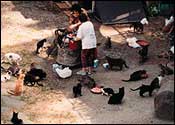 A quick listing of the more popular gay places; everyone knows The Hangar, Rome’s oldest gay bar. The best times to visit are Friday, Saturday, and Monday late evenings. American owned, it is probably the most popular (and one of the easier to find), with a primarily tourist clientele, though a lot of the Gen-X age Romans hang there too. A great address too: Number 69, Via in Selci, near the Colosseum. Nearby you’ll find L’Apeiron (5 Via dei Quattro Cantoni), a two level club big on music videos. For dancing, there are two major places: L’Alibi in the Testaccio district, at 44-57 Via di Monte Testaccio, near the Pyramide; and L’Angelo Azzuro, at 13 Via Merry del Val.
A quick listing of the more popular gay places; everyone knows The Hangar, Rome’s oldest gay bar. The best times to visit are Friday, Saturday, and Monday late evenings. American owned, it is probably the most popular (and one of the easier to find), with a primarily tourist clientele, though a lot of the Gen-X age Romans hang there too. A great address too: Number 69, Via in Selci, near the Colosseum. Nearby you’ll find L’Apeiron (5 Via dei Quattro Cantoni), a two level club big on music videos. For dancing, there are two major places: L’Alibi in the Testaccio district, at 44-57 Via di Monte Testaccio, near the Pyramide; and L’Angelo Azzuro, at 13 Via Merry del Val.
Except for the above-mentioned places, gay spots seem to open and close with such rapidity they would leave the Tasmanian Devil dizzy. Even a just acquired, up-to-date listing probably warrants a phone call to ensure that any given club is actually still there. Bars and clubs are also notoriously difficult to find. Most are hidden behind plain facades with little if any indication that you are in the right spot. They also tend to be in either out-of-the-way neighborhoods or somewhat seedy locales.
OUT & ABOUT IN THE CITY
A few notes about getting around Rome. First, you will probably arrive at Fiumicino Airport. Unless you’ve got an incredible amount of luggage, don’t take a cab into the city. It’s not a short drive and it will blow a huge hole in your budget. There’s a direct train line into the center of the city, you can take either a local or express, each no more than a few dollars. From Stazione Termini you can then take a cab, bus, or metro. Cabs, again, are not cheap, but depending on where you need to go, they may be your only reasonable option.
The bus system covers the entire city extremely well, but it can be incredibly slow, incredibly packed (especially close to rush hour), and very confusing. It is, however, only 1500 lire, less than a dollar. The metro, or subway, consists of two lines that cross the heart of Rome. To get to any of the major sightseeing spots, this is probably your best choice other than your own two feet. I’m a big fan of walking around Rome. It’s not laid out in “a grid” like many American cities, so it can be a bit bewildering, but you’ll discover some amazing little piazzas and sights as you wander.
A caveat about public transportation. It’s operated on the honor system. You buy tickets from machines and walk through open gateways or climb onto buses through doors that are not necessarily close to the driver. You are supposed to punch your ticket in little stamping machines located near these gates or doors. The ticket is time-stamped and is then good for 75 minutes. Within that time period, should someone official ask to see your ticket, you’re in good shape. You’ll see that a large number of locals don’t bother to buy or punch tickets at all and take a chance that nobody will ask to see their ticket. They’re probably right. But it’s a major fine if you’re caught without one that is stamped.
As far as I’m concerned, the one indispensable guide to wandering around Rome is The Blue Guide to Rome (Norton). This 400 page, regularly updated guide covers not only detailed instructions for getting to and from places, but detailed historical and cultural notes and tips. It also includes pretty decent maps that detail the core of Rome.
Q San Francisco magazine premiered in late 1995 as a ultra-slick, ultra-hip gay lifestyle magazine targeted primarily for the San Francisco community. It was launched by my friends Don Tuthill and Robert Adams, respectively the publisher and editor-in-chief, who had owned and run Genre magazine for several years prior. They asked me to come along as the food and wine geek, umm, editor, for this venture as well. In order to devote their time to Passport magazine, their newest venture, they ceased publication of QSF in early 2003.






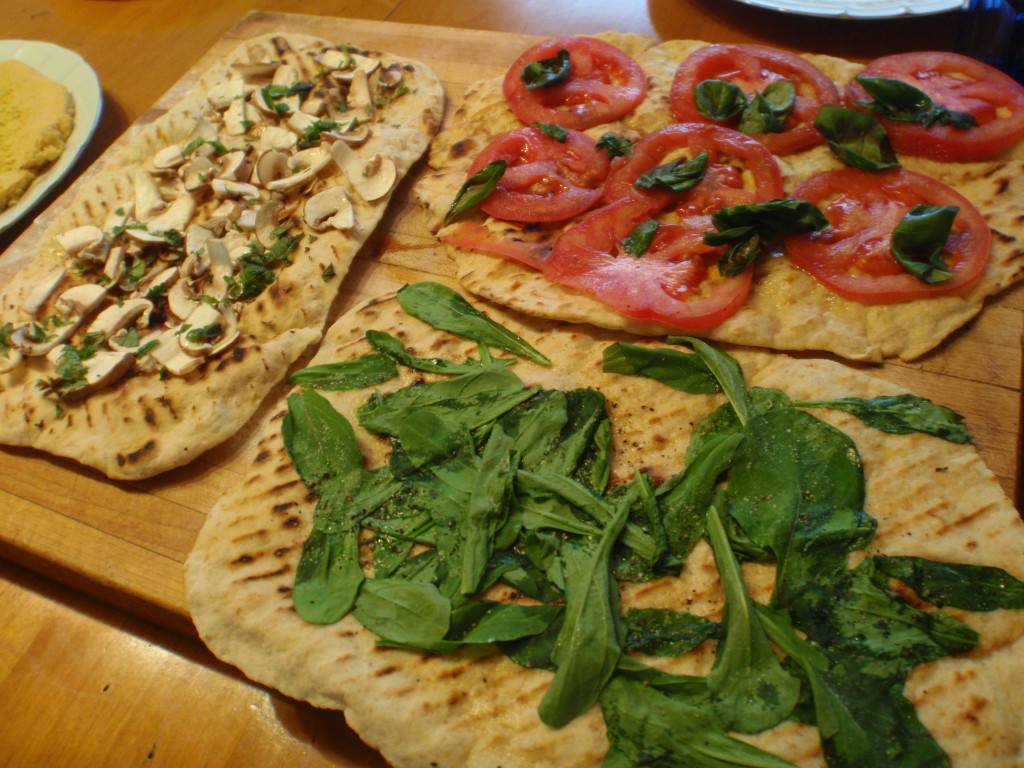
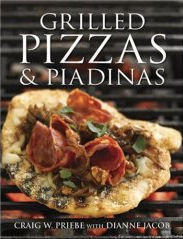 Buenos Aires – The quote above comes from one of my relatively new favorite little cookbooks. It’s a great, step-by-step guide to making various types of grilled pizzas and, those wonderful fold over pizza sandwiches, the piadinas. It’s well-written, to the point, doesn’t make any outlandish claims to having invented the genre as, well, one in particular has, and best of all, is really nicely illustrated with superb photographs that give you a solid sense of what you can expect. It also covers the gamut from basics to elaborate, from savory to sweet, and from pizza for one to party planning. And maybe the really best thing of all, they make it easy. What more can you ask from a cookbook?
Buenos Aires – The quote above comes from one of my relatively new favorite little cookbooks. It’s a great, step-by-step guide to making various types of grilled pizzas and, those wonderful fold over pizza sandwiches, the piadinas. It’s well-written, to the point, doesn’t make any outlandish claims to having invented the genre as, well, one in particular has, and best of all, is really nicely illustrated with superb photographs that give you a solid sense of what you can expect. It also covers the gamut from basics to elaborate, from savory to sweet, and from pizza for one to party planning. And maybe the really best thing of all, they make it easy. What more can you ask from a cookbook?